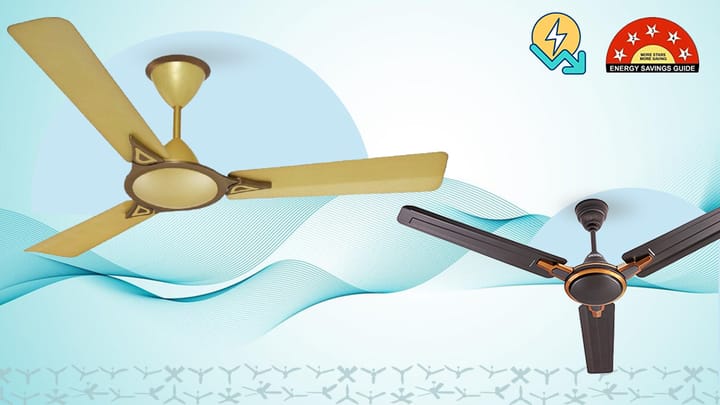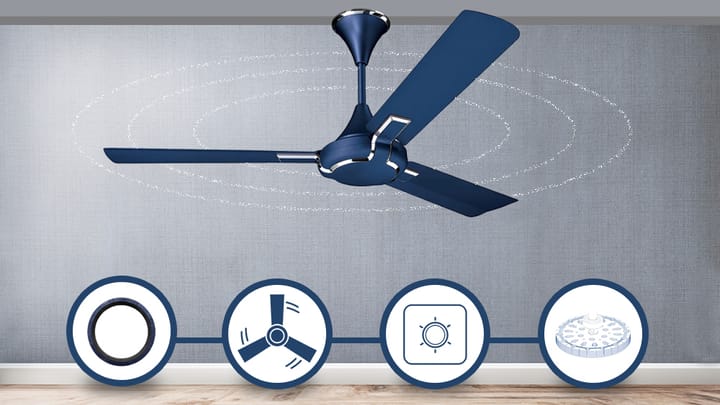Roadmap for States to Improve Energy Efficiency in Focus Sectors

By – Priya Kumari, Raj Kumar Verma, Swati Bajpai
India is a diverse country with different energy consumptions patterns in different states. States have an important role to play in achieving the desired development goals and structure of energy efficiency in the country. There is a continuous need for the implementation and evaluation of energy policies, programs, institutional capacity and markets in order to identify and opt the best practices. Increasing energy demand in the state in different sectors strains the state’s natural resources and impacts the environment. The Bureau of Energy Efficiency (BEE) provides a legal framework for energy efficiency initiatives in the country. The act empowers the Central Government and in some instances state government to establish energy consumption norms and standards for designated consumers depending on the dynamics, climatic conditions, geography and demography of the state. State Energy efficiency programs and action plans is the need of the hour through the identification of the focus sectors, undertaking gap analysis and implementing the best plan strategy. The aims are to provide technical assistance for the identification of focus sectors for the Action Plan in various states/UTs, to ensure that the allocation of resources and energy conservation is as per the requirement of state/UT.
For the purpose of the action plan, the all states are divided into six zones including North-east, East, North-1, North-2, West and South. BEE has appointed interested and technically qualified agencies as Consultant for the preparation of the action plan. The State Energy Efficiency Action Plan is sought in two parts, a short term-plan for a tenure of 5 years and a long-term plan targeting high impact energy efficiency by the year 2030. Consultation with the related stakeholders will play an important role in identification of the focus sectors for the State Energy Efficiency roadmap.

Energy Efficiency is one of the easiest and cost- effective way to address the challenges of high energy consumption, high energy costs and the global climate change benefiting economic, environment and helps in the risks management.

In the Energy Conservation Act (EC) 2001, it is clearly mentioned that the states are required to develop and enforce energy efficiency labels and standards, formulate energy efficient policies, build institutional capacity, plan and implement projects, and create self-sustaining markets for energy efficiency.
The energy consumption is broadly divided in five major focus sectors i.e., Buildings, Industries, Agriculture, Municipalities and DISCOMs and Transportation.
Focus Sectors

BUILDINGS

Buildings are one of the major high energy consumption sector. A need of energy efficient structures and improved ways of construction came to reduce the impact of emissions by buildings and to conserve energy. Energy conservation building codes for efficient energy and its conservation in commercial buildings to suit regional and local climates are needed to be amended by the state governments.
An energy efficient building has better and improved insulation, more energy efficient lighting, windows and more efficient cooling and heating equipment.
By establishing the baseline requirements, building uses less energy to operate lifetime. BEE has various programs, policies and initiatives to enhance the energy efficiency in buildings.
The Energy Conservation Building Code (ECBC) was introduced on 27th May 2007, developed by the Govt. of India for new commercial buildings. In 2017, Bureau of Energy Efficiency (BEE) has released ECBC 2017 versions for the states to enforce. BEE has also developed a Star Rating Program for commercial buildings based on the actual energy usage and performance.
INDUSTRIES

India has taken several landmark measures to improve energy efficiency in the industrial sector. Industry sector has 53% of total primary energy demand in India, and more than 30% in most States. The Perform, Achieve and Trade (PAT) is a market based scheme that allows to earn energy saving certificates and trade them to the companies that have failed to achieve their targets in a certain energy sectors. Only few states are regulating mandated energy audits for specific industry categories other than PAT DCs and provision to provide financial incentives for implementing energy efficiency in industrial sector, as most of the states are yet not that developed and set energy saving targets for the development of industry, apart from the PAT program.
AGRICULTURE

Energy efficiency in this sector can be achieved by using more energy efficient machinery and efficient tillage, sowing, harvesting and threshing equipment’s and techniques, by replacing inefficient energy pumps to efficient and solar pumps and installing energised pump sets.
There are several schemes, policies and programs introduced by the Indian government to reduce the energy consumption in the sector like Pradhan Mantri Ujjwala Yojana, National Mission on Sustainable Agriculture (under NAPCC), On Field Water Management (OFWM), National Energy Efficient Agriculture Pumps Program and many more energy efficient policies.
MUNICIPALITIES

Municipal Energy Efficiency Program in a larger scale facilitates engagements between the Urban Development Bodies (ULB) and state governments in the area of energy efficiency program in the Public Water and Sewage systems with Energy Efficiency Services Limited EESL. Ministry of Housing and Urban Affairs and Energy Efficiency Services Limited (EESL) have jointly taken up an initiative that will enable replacement of inefficient pumps in Public Water Works & Sewerage Systems. The investment will be recovered from the savings in energy resulting reduction of energy consumption and carbon footprints.
DISCOMs

In the power sector there are three main process - Power Generation, Power Transmission and Power Distribution. DISCOMs are the Distributing companies that are responsible for the power distribution in the state. The Electric Power Survey covers the projection of total electrical energy requirement and peak electricity demand for various categories of energy consumption. Peak Electricity Demand for DISCOMs worked out by applying the suitable load factor, depending on the consumer mix on the electrical energy requirements of the DISCOMs. As per the Indian Electricity Act 2003, the Renewable Purchase Obligations (RPO) mandates all the electricity distribution licensees to purchase or produce a minimum specified quantity of their requirements from renewable energy sources.
Policy initiatives of Government affecting electricity demand are reduction of AT&C losses, Power for all initiative, Demand Side Management – conversation & efficiency improvement programs, roof top solar programs and electric vehicle.
TRANSPORT

In the transport sector, there is a need to implement and promote energy efficient public transport, electric vehicles or vehicles with more efficient and cleaner fuel. Policy and framework for electric vehicles at the state level needs further focus. The promotion of policies on improving the fuel use and standards for both heavy duty and light duty vehicles is needed.
In public transport there should be reduce in energy requirements including promotion of CNG vehicles in the state. Diesel vehicles may be discouraged until clean diesel becomes available on a nation-wide basis.
In Private Transport, the policies promoting and encouraging the electric and hybrid vehicles needs to be supported. Mass transport systems such as Metro rail should be encouraged.
Way Forward
1. Bureau of energy efficiency (BEE) has taken up the initiative to provide a legal framework for energy efficiency initiatives and to develop policies and strategies with thrust on self-regulation, market principles, within the overall framework of Energy Conservation Act (EC Act).
2. Detailed identification of the focus sectors of the state energy efficiency roadmap among the various departments, associations and professionals working for the energy efficiency in the state.
3. Consultation with the related stakeholders and Implementation of energy efficient policies in respective states. The recommendations are done based on the gap analysis and the assessment of current status of policy implementation.



